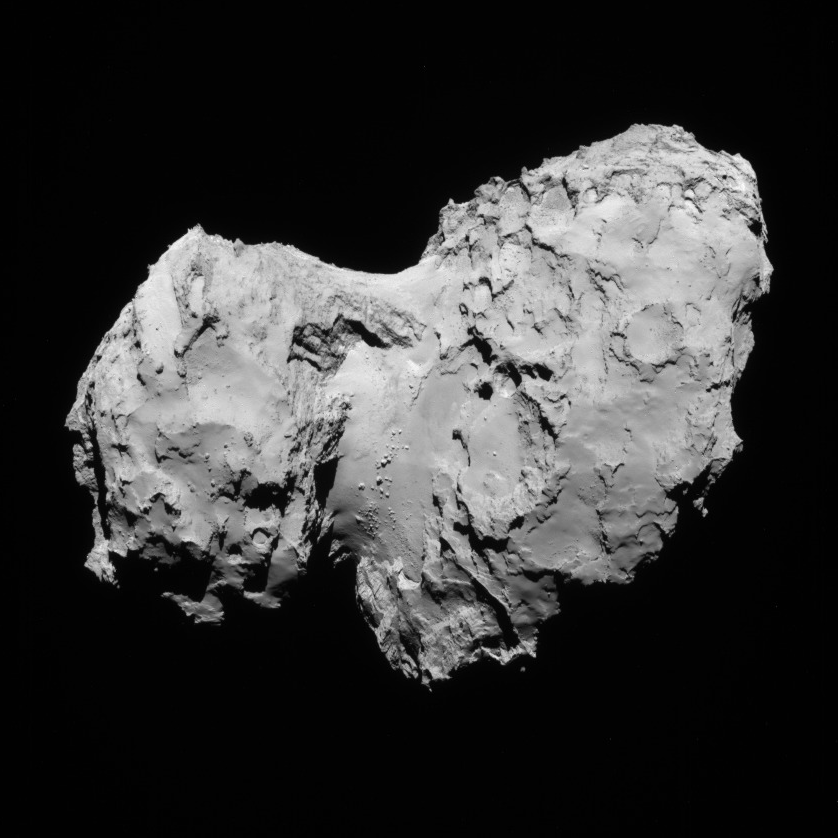
 Copyright © Michael Richmond.
This work is licensed under a Creative Commons License.
Copyright © Michael Richmond.
This work is licensed under a Creative Commons License.
What is the density of comet Churyumov-Gerasimenko?
This project must be done by individuals. The goal is to figure out the density of the comet Churyumov-Gerasimenko, using photographs taken by the Rosetta spacecraft. Once you have the density, and its uncertainty, you can make a guess about the composition of the comet. Is it solid rock? A chunk of ice? A pile of sand?
Use this photograph of the comet, taken by the Rosetta spacecraft on Aug 19, 2014. At that time, the craft was 79 kilometers from the comet. The image is 5 degrees from side to side and from top to bottom, and contains 1024 x 1024 pixels.

You can find additional pictures of the comet at this entry in the Planetary Society Blog. They might help you to make a very simple model of the comet. It's not a perfect cube, nor a perfect sphere, of course. In order to compute its volume, you'll need to pick some shape(s) that is at least approximately correct, and figure out the dimensions of that shape(s).
Write down your measurements and use them to compute the length, width, and height of the comet; include an uncertainty in each. Then, compute the volume of the comet, and its uncertainty.
The blog entry provides an estimate of the mass of the comet: M = 1 x 1013 kg, based on its gravitational effects on the spacecraft. Use this mass, plus your volume, to compute the density of the object. Include an uncertainty.
Finally, compare your density to the densities of various items that might make up a comet. Can you guess which items are the best possibilities?
This page maintained by Michael Richmond. Last modified Aug 25, 2014.
 Copyright © Michael Richmond.
This work is licensed under a Creative Commons License.
Copyright © Michael Richmond.
This work is licensed under a Creative Commons License.